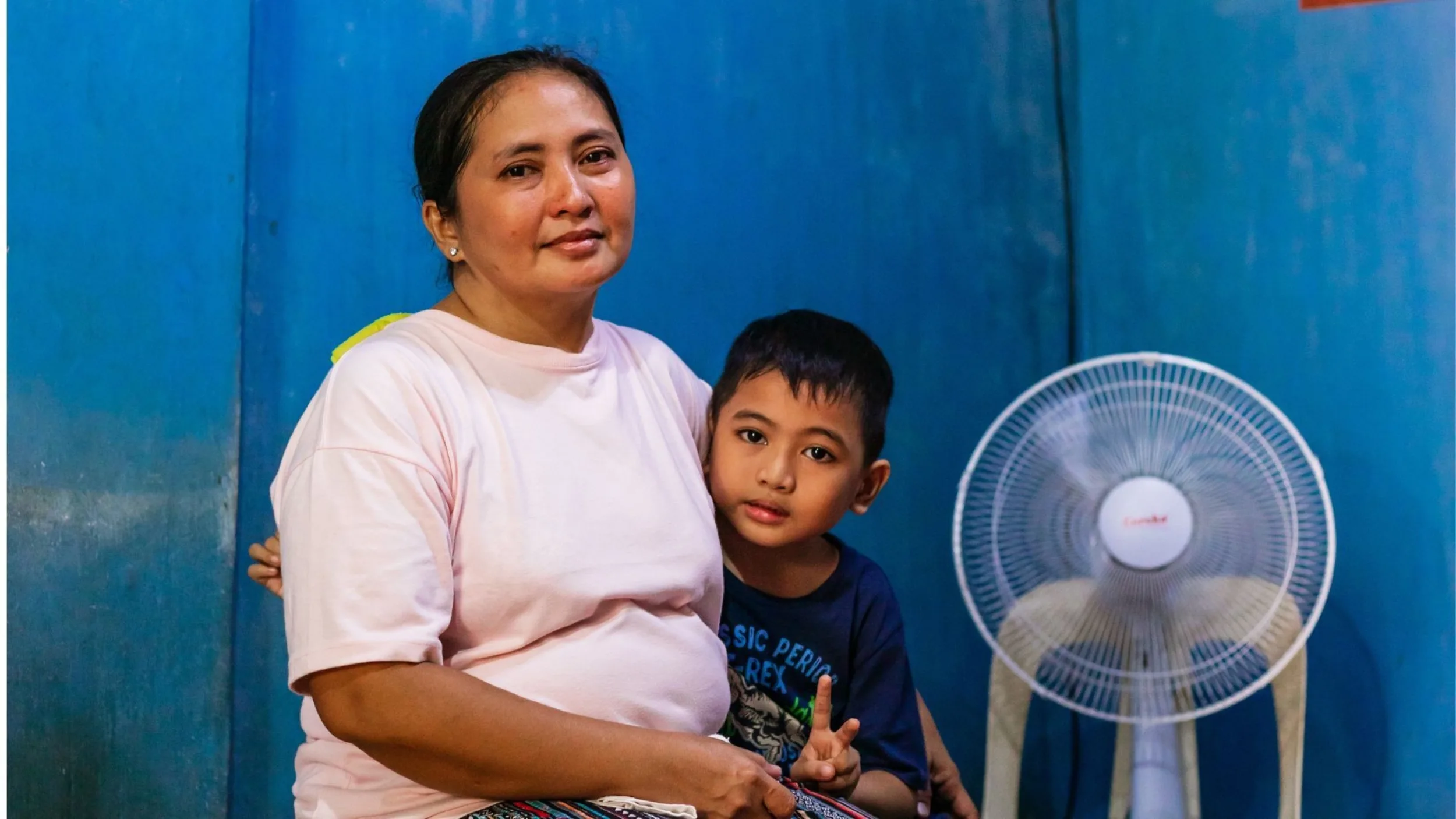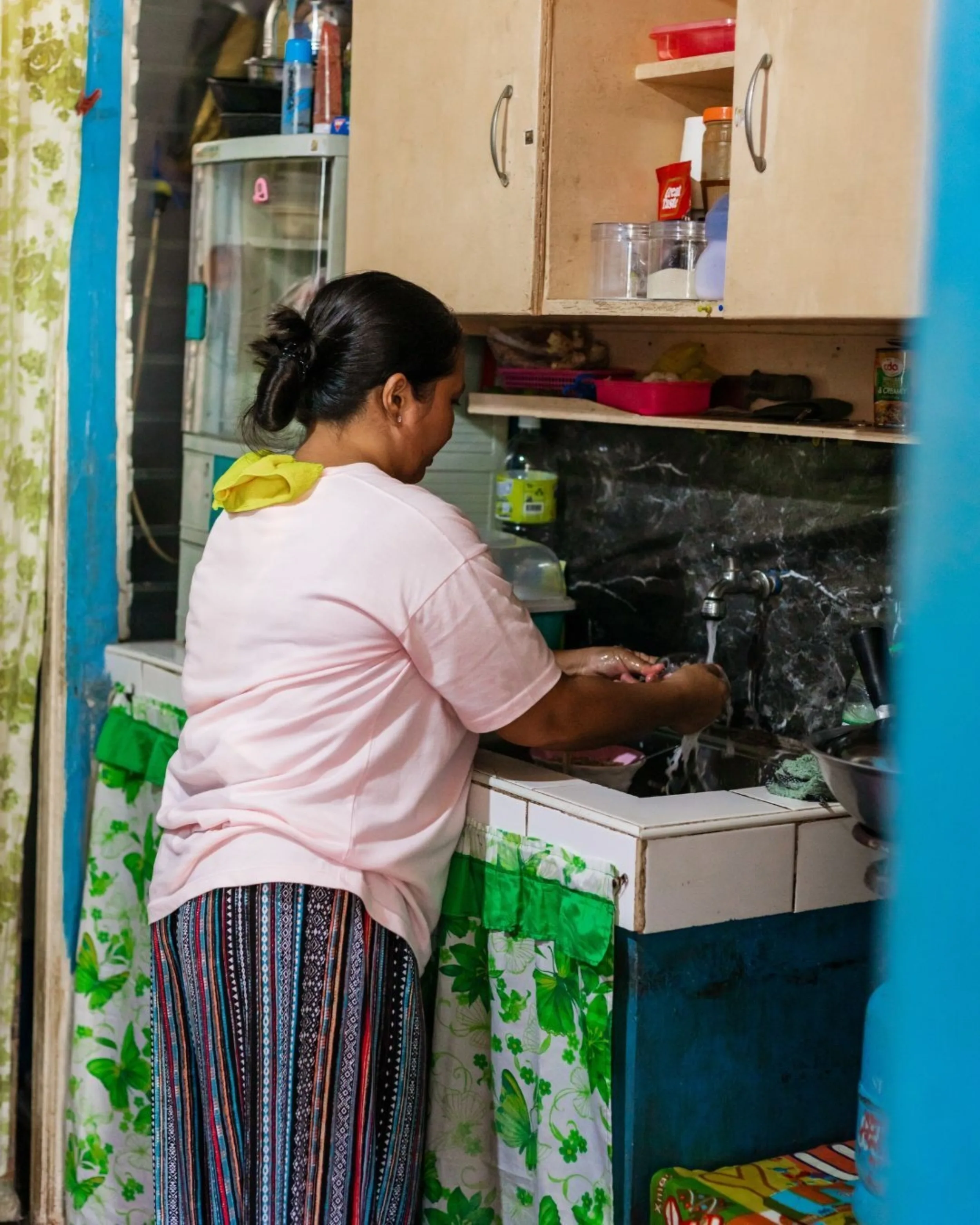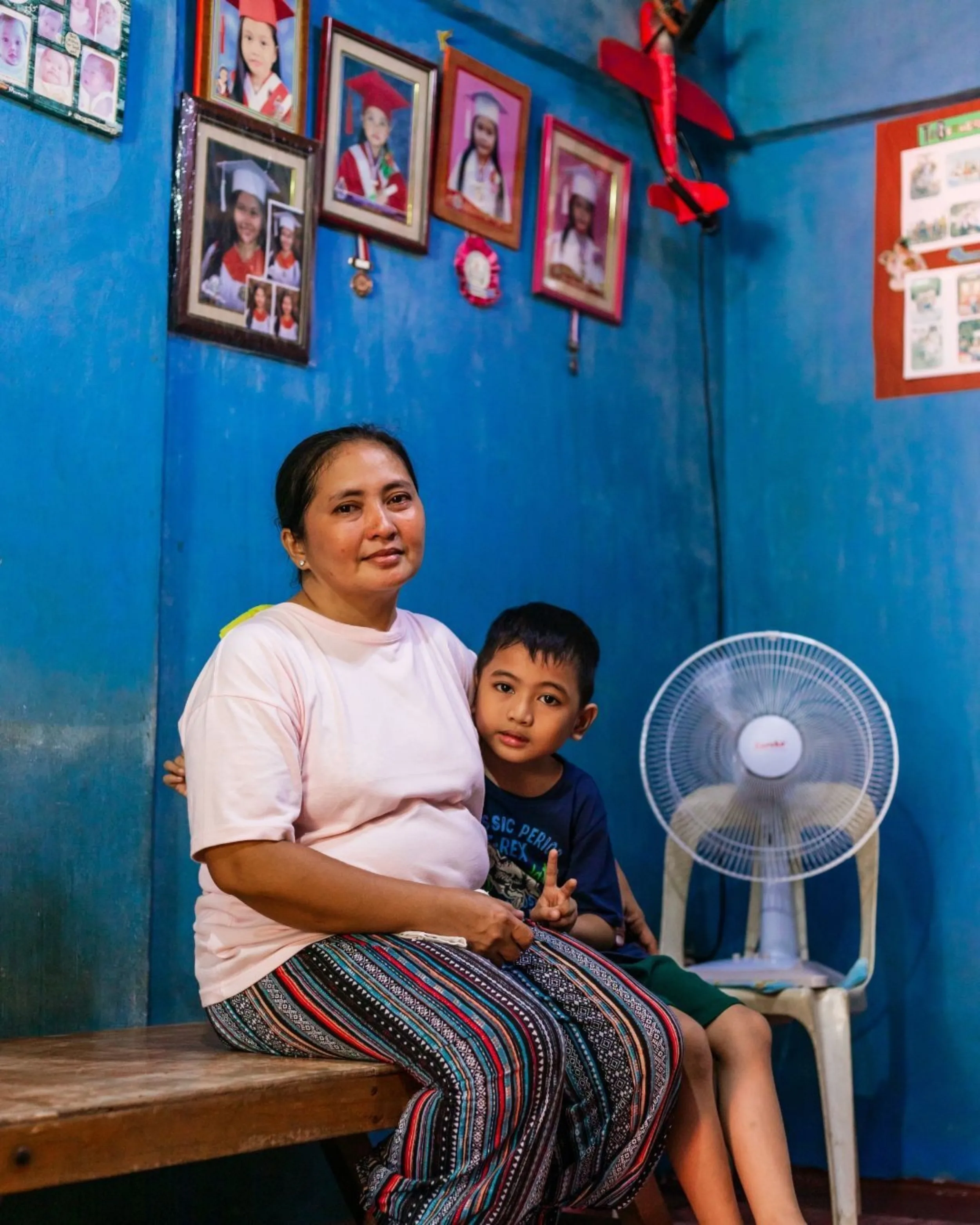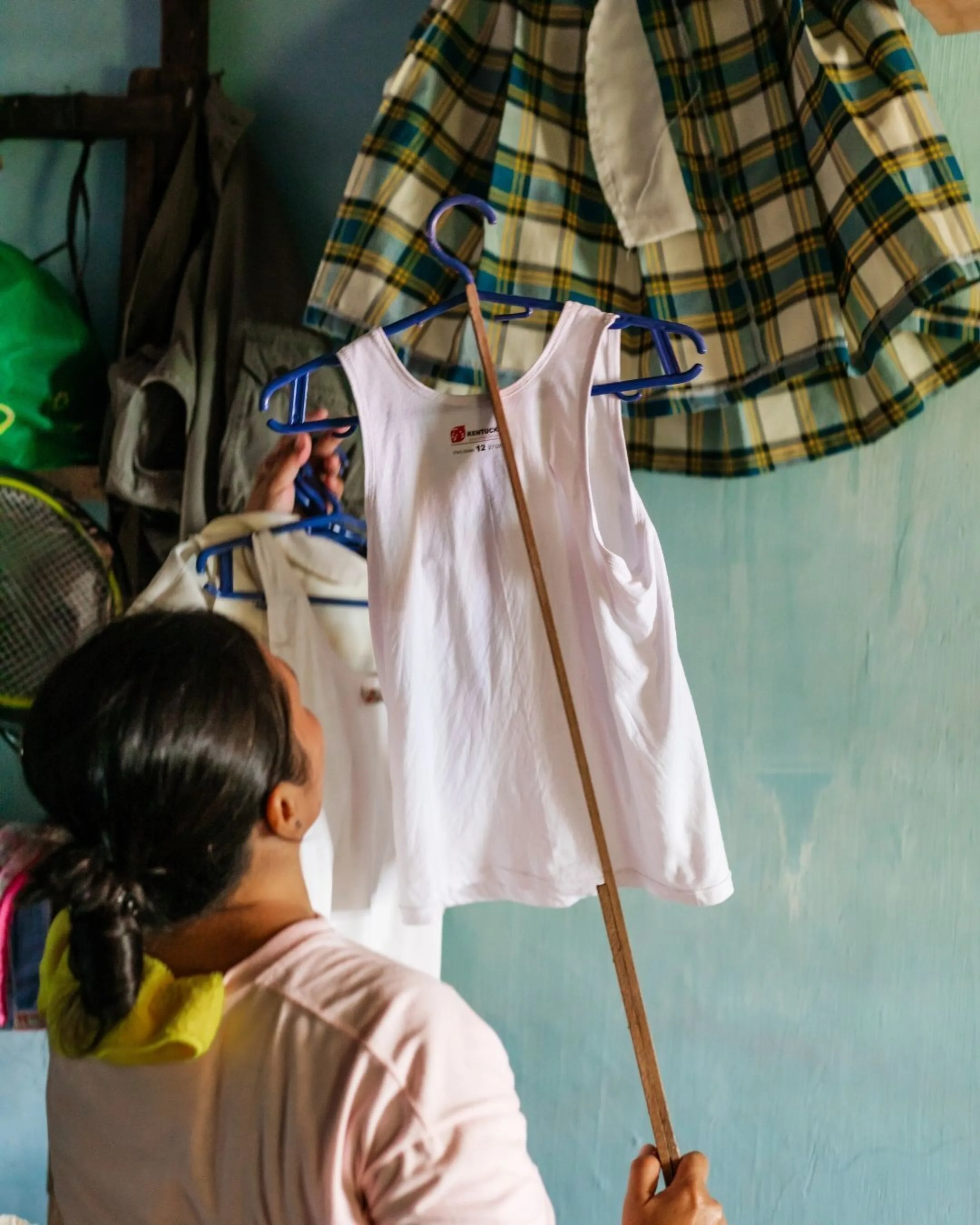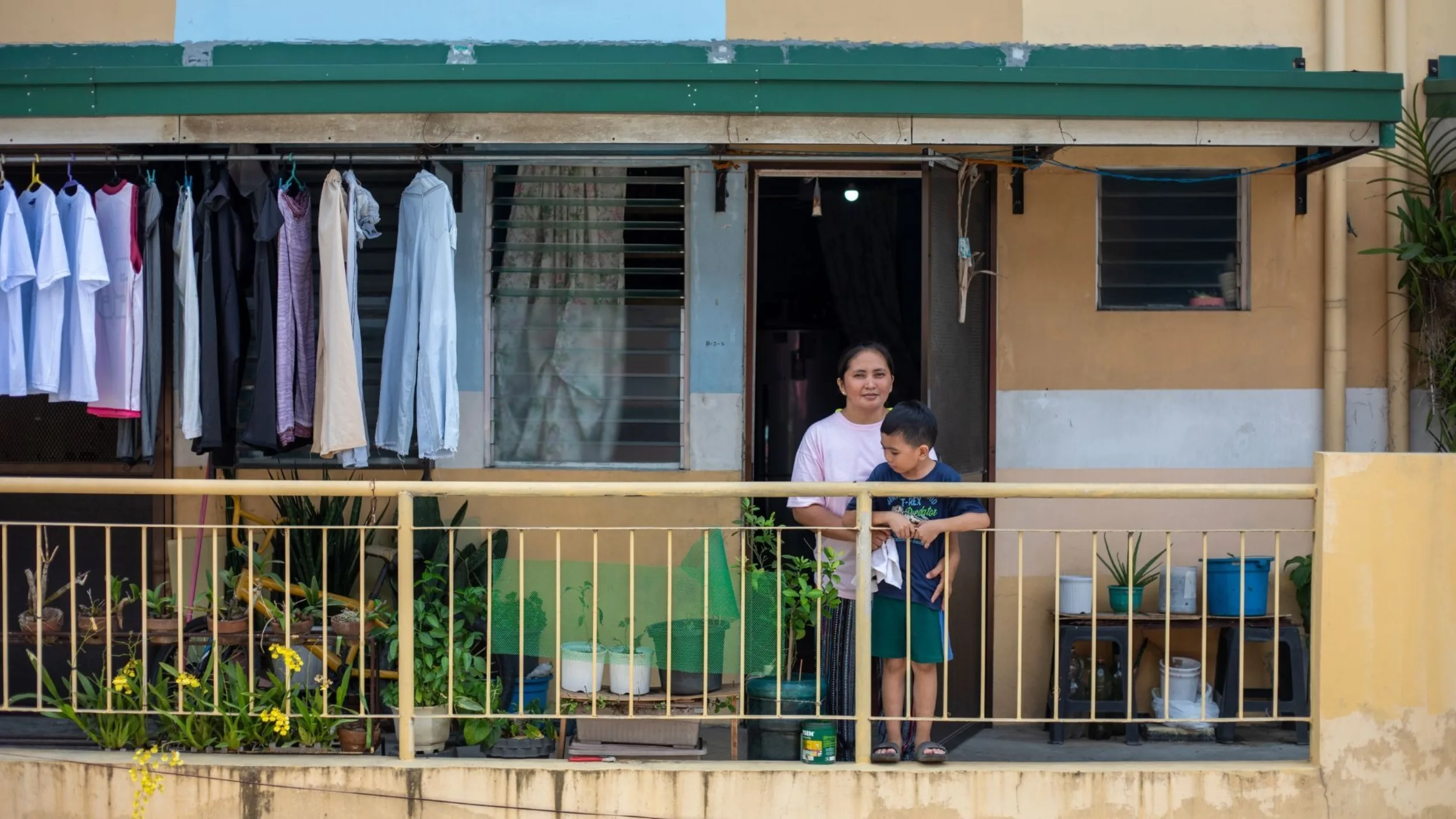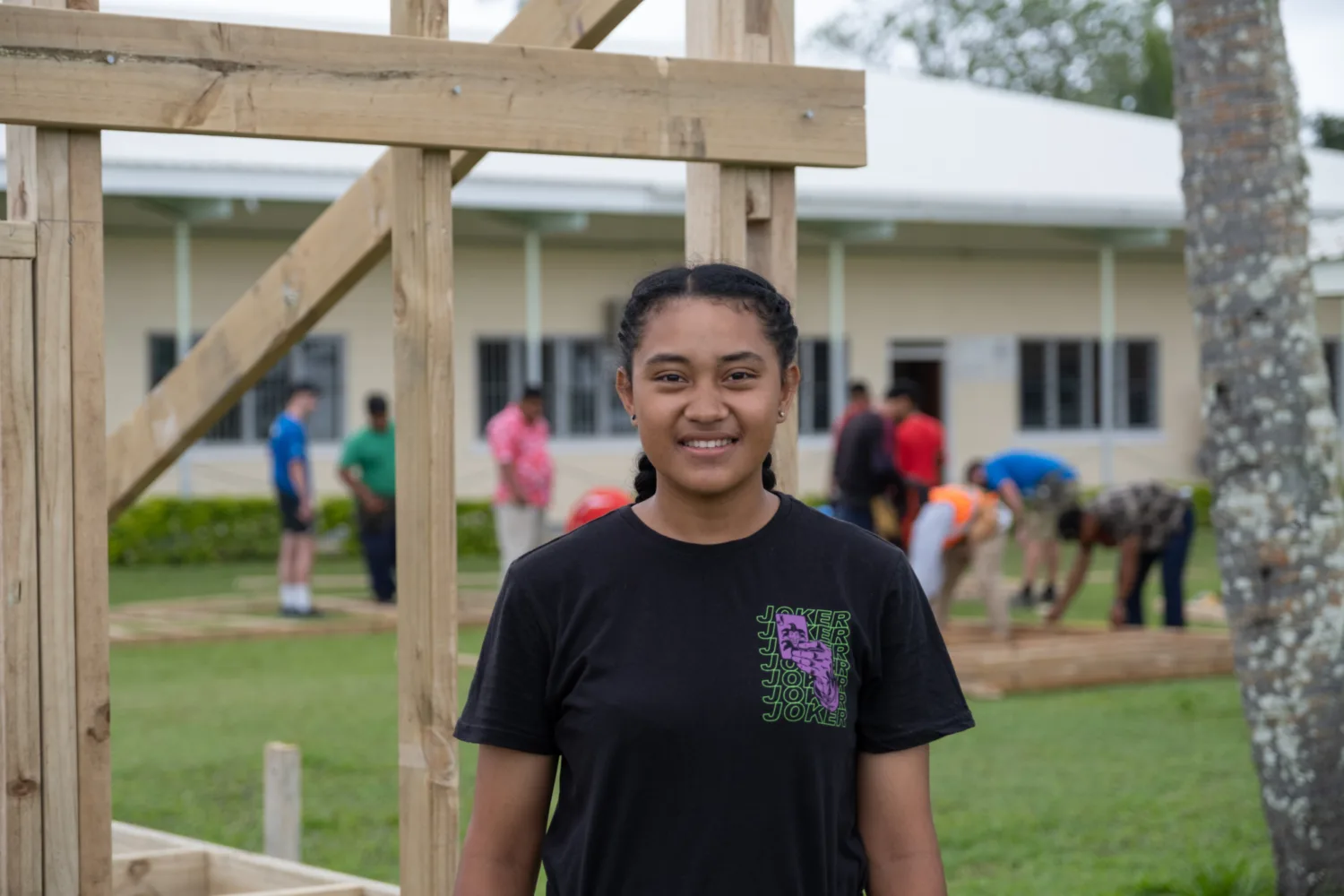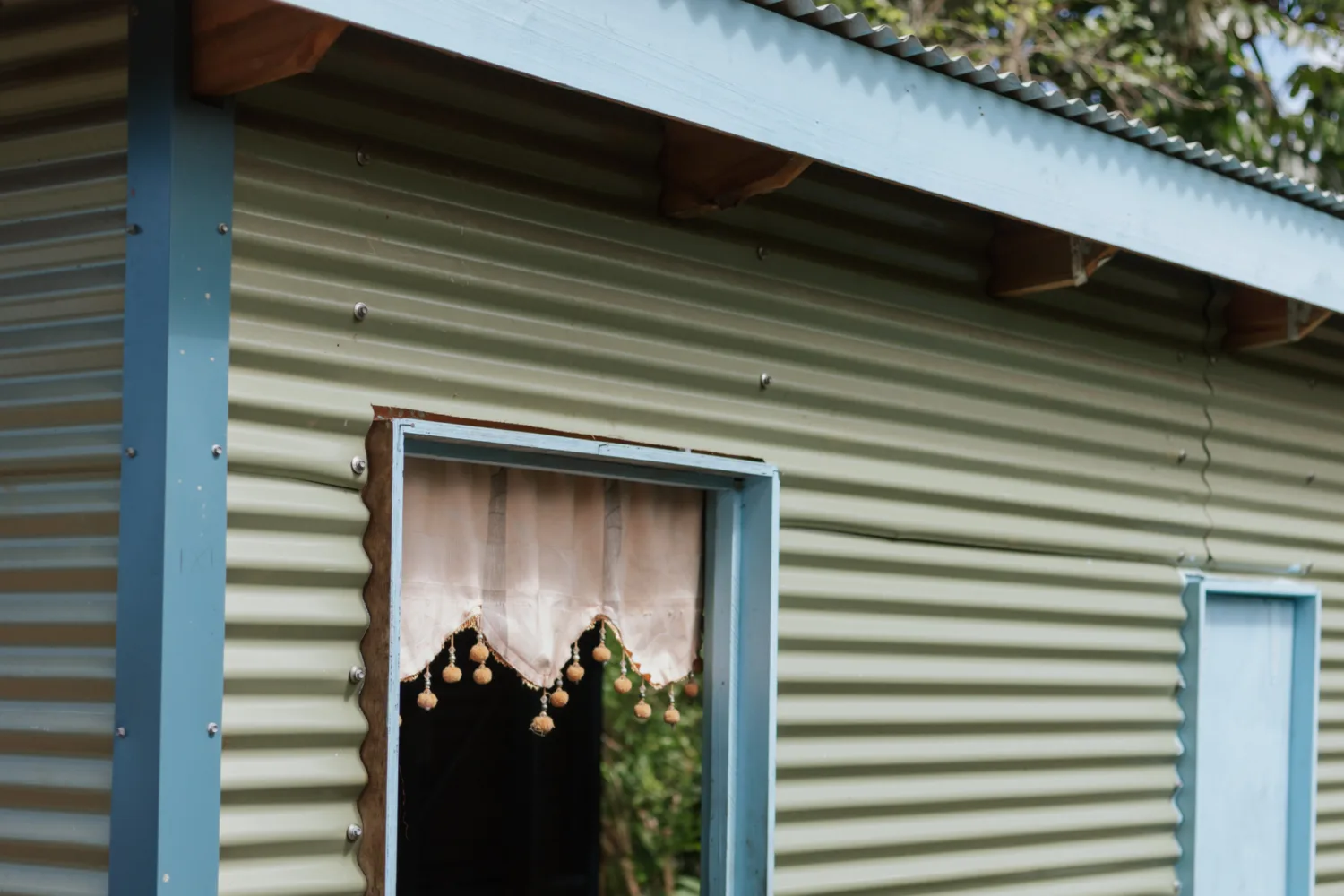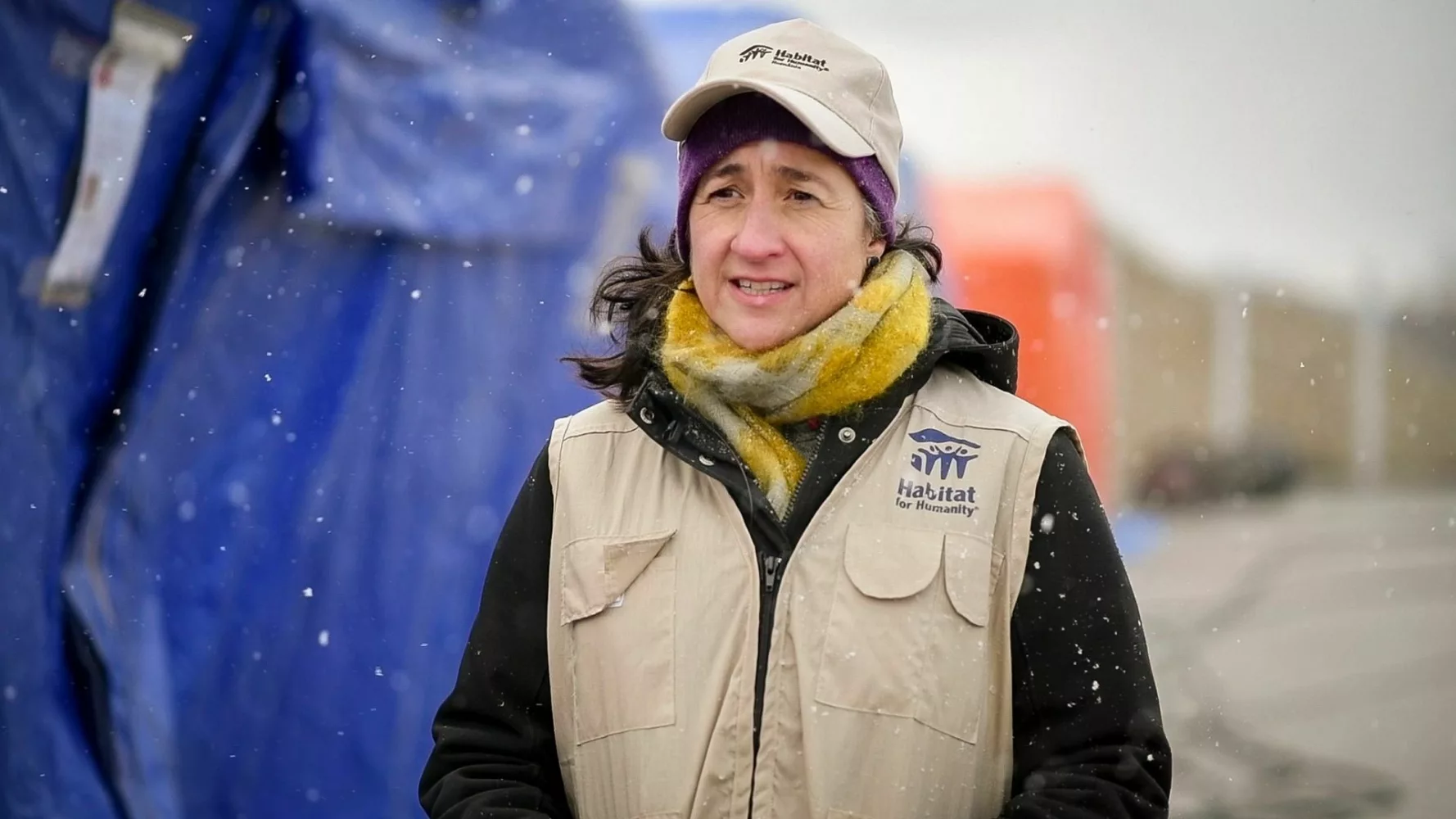Rizavima had lived in informal settlements in Manila, Philippines, for nearly four decades. Soon after welcoming her third child seven years ago, Rizavima also greeted a newfound certainty that her children would grow up in a safe family home; a Habitat home. This was the first time she had experienced the safety, privacy, and joy of homeownership.
“I moved in as soon as I was given the keys to this home,” shares Rizavima.
For two years, prior to moving into her Habitat home, Rizavima’s home was a bunkhouse in Quezon – small, cramped, unsafe, and always meant to be a temporary form of accommodation. The roofs leaked, the floors were damp, the air lingered with the smell of sewage, and she had nowhere private to wash her clothes or bathe. The poor living conditions put a strain on her children’s health and her younger daughter got sick with dengue fever.
In 2017, the Local Government of Quezon City partnered with Habitat for Humanity Philippines to upgrade 266 homes in Quezon through the Bistekville 4 Socialized Housing Project. All 266 families were informal settlers like Rizavima, who were living in very poor, unsafe conditions without secure tenure.
With no formal right to the land their homes stood on it was very difficult for families to build a strong foundation for themselves in the face of such uncertainties.
Habitat designed the two-storied walk-up apartments were through a consultative process with the families, and constructed with basic amenities such as a kitchen, bathroom, and separate living and sleeping areas in a compact but comfortable 40 sq meters layout.
“We extended the loft to create additional space for my children and they love it. They have more space to play now and spend most of their time there,” says Rizavima.
Most families in Bistekville have taken a similar approach, extending their loft to create additional space to meet the needs of their growing family. Rizavima explains that the extension cost the family 20,000 Philippine Pesos, and her husband and brother worked on it themselves to save additional costs.
“The kitchen is my favorite part of the house,” says Rizavima through a smile. Little Jollibee figurines are lined on top of the cabinet, courtesy of her youngest son’s love for the fast-food company. The living room walls are filled with framed pictures of her children’s graduation photos, her pride and joy.
Living in the neighbourhood has also allowed Rizavima to feel like she is part of a community. On some Saturdays, she gets together with the other women in Bistekville to attend Zumba classes. Sometimes they hold community events at the neighborhood Church which brings all the families together. She can rely on help from the Homeowner’s Welfare Association (HOWA) volunteers, and they all help each other out. Her children go to school nearby, her husband works as a messenger within commuting distance, and the location is convenient for all her needs.
And at the centre of the family’s day-to-day activities is their home; a well-loved, lived-in home to return to. Modest and filled with love and hope for a better future for her family. Rizavima’s four decades of living in an informal settlement has come to an end, with ownership rights that finally reflect her deep roots in her community.
Rizavima says she would like to live in her home “for as long as I live. I will always live here. This is my home.”
If you wish to make a donation via credit card over the phone, please phone us on (09) 579 4111
You can donate via internet banking:
Habitat for Humanity New Zealand
ANZ
06-0177-0127197-00
If you wish your donation to go to a specific appeal please include in the payment Reference
If you make a donation on our website your receipt will be emailed to you automatically.
If you choose to donate via internet banking, you will receive your receipt via email 1-2 days after you make your donation. If no email address is given, your receipt will be posted to the address given.
Donations over $5.00 are tax deductible. You can submit your receipt to IRD website, and they will process your tax rebate.
Yes, you can give regular monthly donations to your chose Habitat for Humanity appeal. Just select 'give monthly' when processing your donation payment.
You can change, cancel or suspend your monthly donation at any time. Please email us at info@habitat.org.nz, or phone us on (09) 579 4111.
Your credit card will be charged once you submit your first monthly gift, and future donations will be made on that same day going forward. If you wish to change your payment date to better suit your pay cycle, please get in touch via information@habitat.org.nz, or phone us on (09) 579 4111 and we can easily action that for you.
Yes, you will receive an annual tax receipt at the close of the financial year, recording all donations.
Yes, if you wish to donate via internet banking, our details are
Habitat for Humanity New Zealand
ANZ
06-0177-0127197-00
If you wish your donation to go to a specific appeal, please enter into your Reference
One tax receipt recording all your donations for the financial year, making it easy to claim your tax rebate.
With small payments spread out month to month, becoming a HopeBuilder can suit any budget. Even a small amount can have a huge impact.
Your donation occurs automatically each month, and you can pause, downgrade, upgrade, or cancel at any time.
Your regular support ensures long-term impact, all year long.
Please fill in the below enquiry form and we will be in touch soon.
Please fill in the below enquiry form with your details and we will be in touch within 2 working days.
